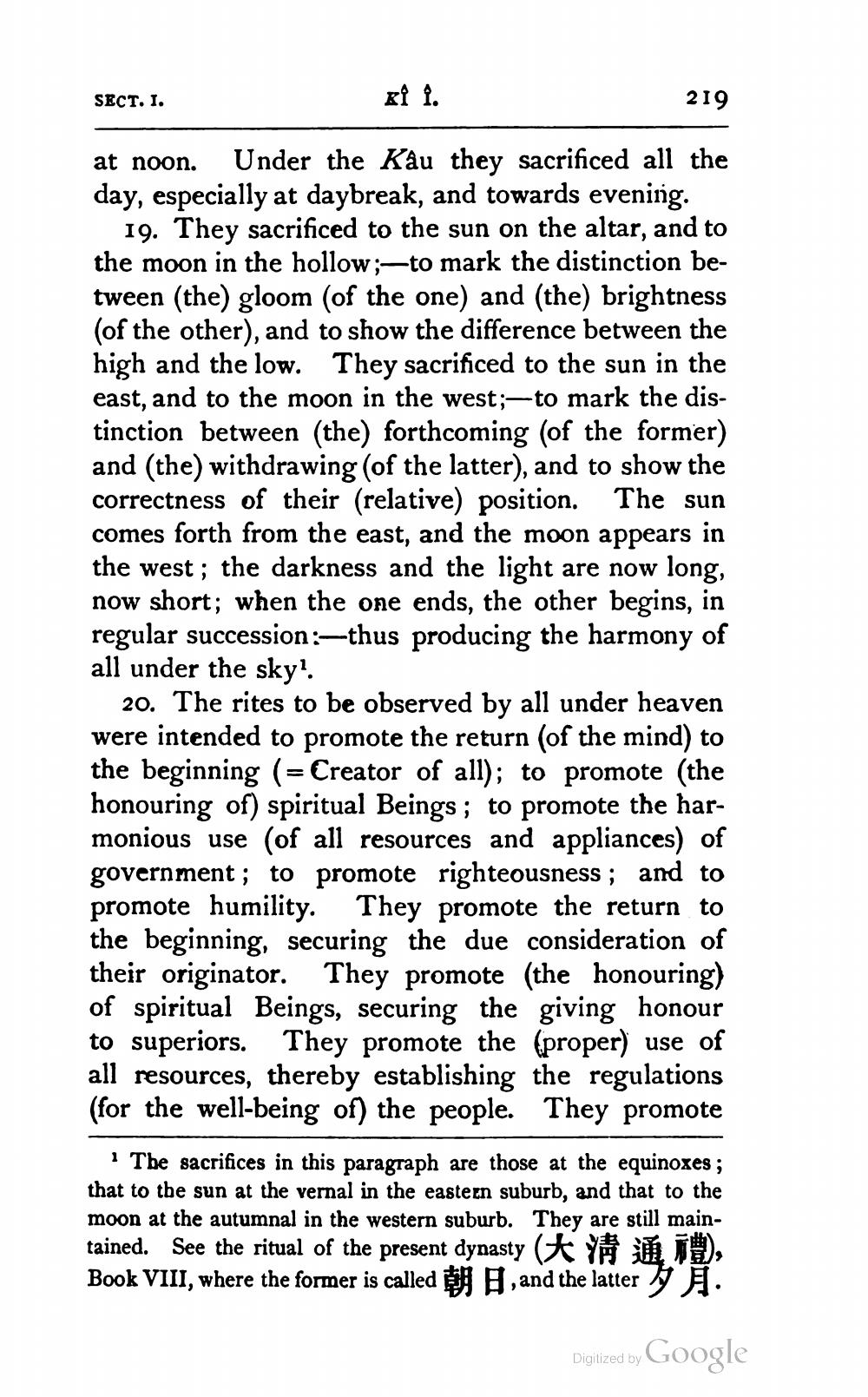________________
SECT. I.
ki 1.
219
at noon. Under the Kâu they sacrificed all the day, especially at daybreak, and towards evening.
19. They sacrificed to the sun on the altar, and to the moon in the hollow;—to mark the distinction between (the) gloom (of the one) and (the) brightness (of the other), and to show the difference between the high and the low. They sacrificed to the sun in the east, and to the moon in the west;—to mark the distinction between (the) forthcoming (of the former) and (the) withdrawing (of the latter), and to show the correctness of their (relative) position. The sun comes forth from the east, and the moon appears in the west; the darkness and the light are now long, now short; when the one ends, the other begins, in regular succession :thus producing the harmony of all under the sky?
20. The rites to be observed by all under heaven were intended to promote the return (of the mind) to the beginning (= Creator of all); to promote (the honouring of) spiritual Beings; to promote the harmonious use (of all resources and appliances) of government; to promote righteousness; and to promote humility. They promote the return to the beginning, securing the due consideration of their originator. They promote (the honouring) of spiritual Beings, securing the giving honour to superiors. They promote the proper) use of all resources, thereby establishing the regulations (for the well-being of) the people. They promote
The sacrifices in this paragraph are those at the equinoxes ; that to the sun at the vernal in the eastern suburb, and that to the moon at the autumnal in the western suburb. They are still maintained. See the ritual of the present dynasty (t
), Book VIII, where the former is called , and the lattery .
Digitized by Google




